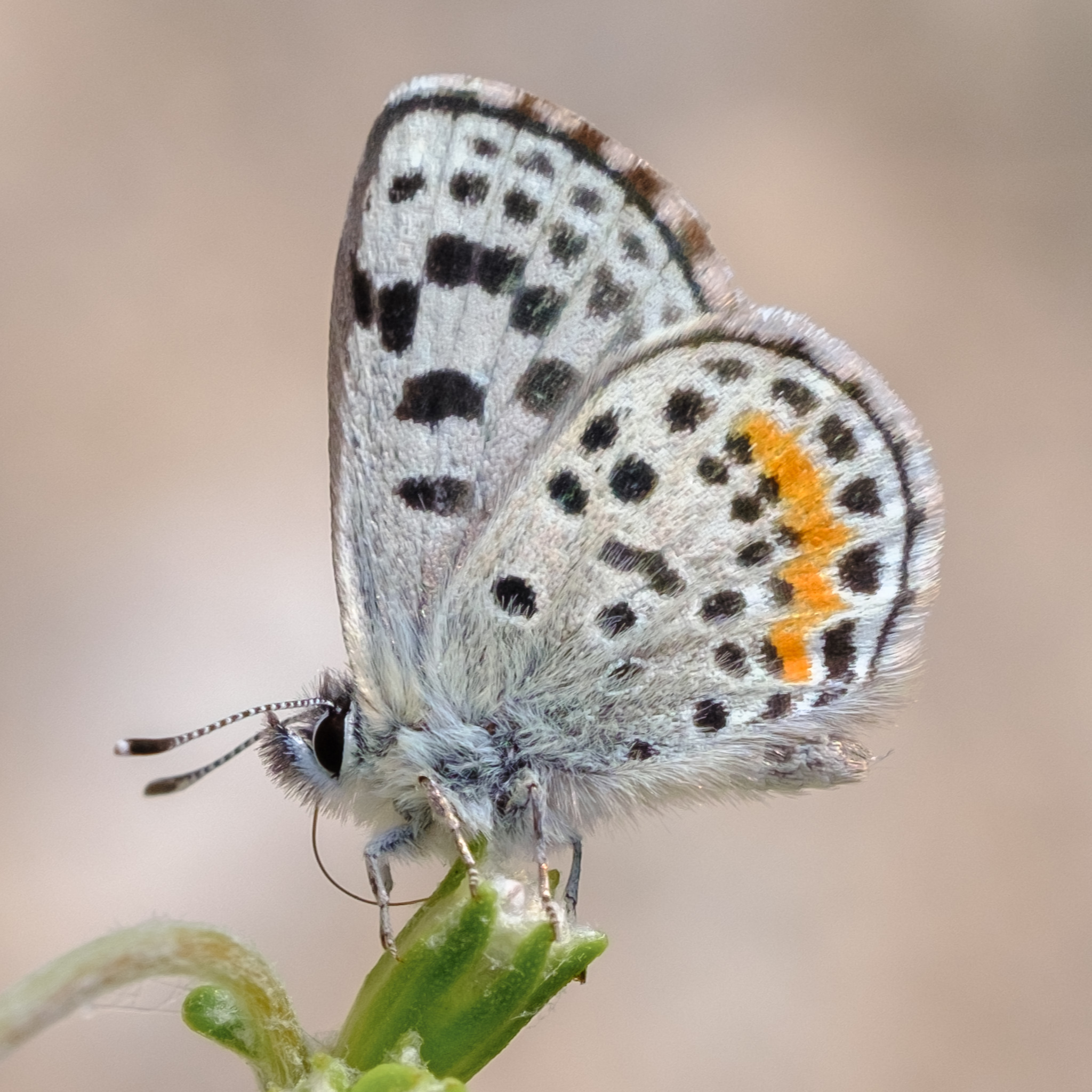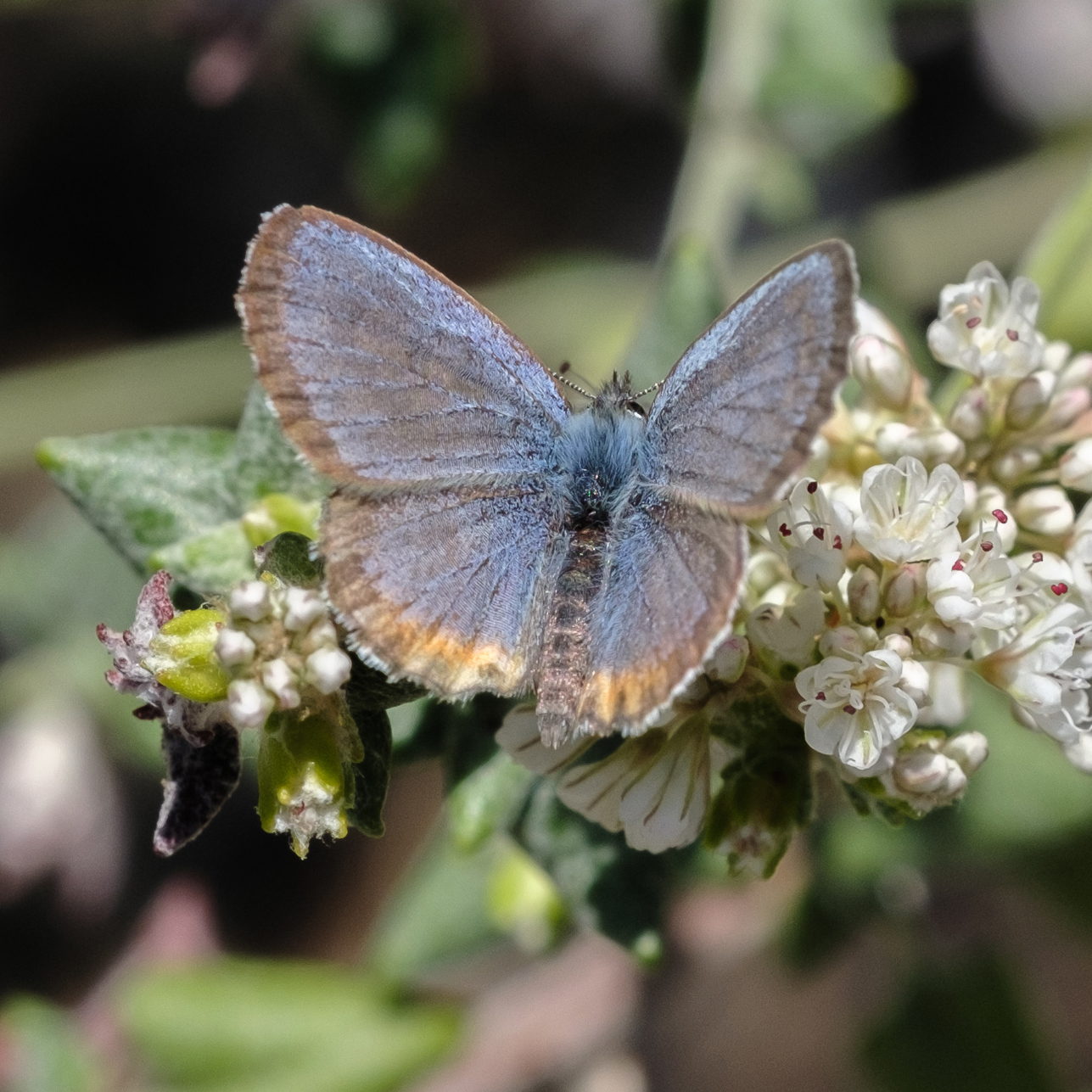On the El Segundo Blue Butterfly

Euphilotes alynni, also known as the El Segundo Blue butterfly, is a species of Lycaenid butterfly local to the coastal scrub habitats of the Los Angeles area. It has been considered critically endangered since 1975, when it became one of the first insects added to the newly-created endangered species list. Until recently, it was considered a subspecies of Euphilotes battoides, but recent scholarship has argued it ought to be designated as a species in its own right.
The El Segundo Blue is famous among locals, but rarely ever seen except on commemorative plaques and murals. It's not just that the population is small: its lifespan as an adult butterfly only lasts a debaucherous week or two, during which it mostly feeds and mates. No need to leave the home bush: that's where all the food and sex are, after all.
E. alynni larvae have special organs which produce a sweet chemical which attracts ants. As the larvae mature, the ants protect the larvae from predators and parasites. This symbiotic relationship is known as myrmecophily.
The life cycle of E. alynni is closely tied to the flowering cycle of Eriogonum. parvifolium, the sea cliff buckwheat. In fact, the pupa stage of the ESB's life (aka the "coccoon" stage) may last as long as two years as the pupa waits for ideal weather conditions for its host plant. The ESB feeds and lays eggs exclusively on E. parvifolium, which grows in loose dune sands alongside sand verbenas, chanaechtis, and lupines.
Although E. parvifolium's range extends beyond the coastal dunes of El Segundo, E. alynni is only known to survive in a few specific areas near the beach. This suggests there is some other environmental factor on which they depend. Maybe it's the consistent onshore breeze, the clockwork marine layer cover, or the salty seaside air... who knows. In any case, its remaining habitat is smaller than a footbal field.


The rest of its natural range has been destroyed and replaced by industrial and residential developments: Los Angeles International airport (Los Angeles World Airports), the Hyperion Water Reclamation Plant (LA City Sanitation & Environment), Scattergood Generating Station (LA DWP), the El Segundo Energy Center (NRG), the El Segundo Oil Refinery (Chevron), and the city of El Segundo itself. Our very way of life is the greatest threat to our local icon... and to all other forms of life on Earth.
The Chevron refinery likes to take credit for maintaining a patch of restoration habitat for the El Segundo blue. I guess it's supposed to be good PR. Honestly though, the refinery's presence on the former dune ecosystem is an affront to nature. In my opinion, the E. allyni restoration patch should be seized by the City of El Segundo and maintained with municipal funds. The refinery should probably close down and be converted into a nature reserve managed by the Gabrieleño-Tongva Tribe.
Or we can just keep poisoning our air and water indefinitely! :~)
Here are some resources related to the ESB and its preservation: